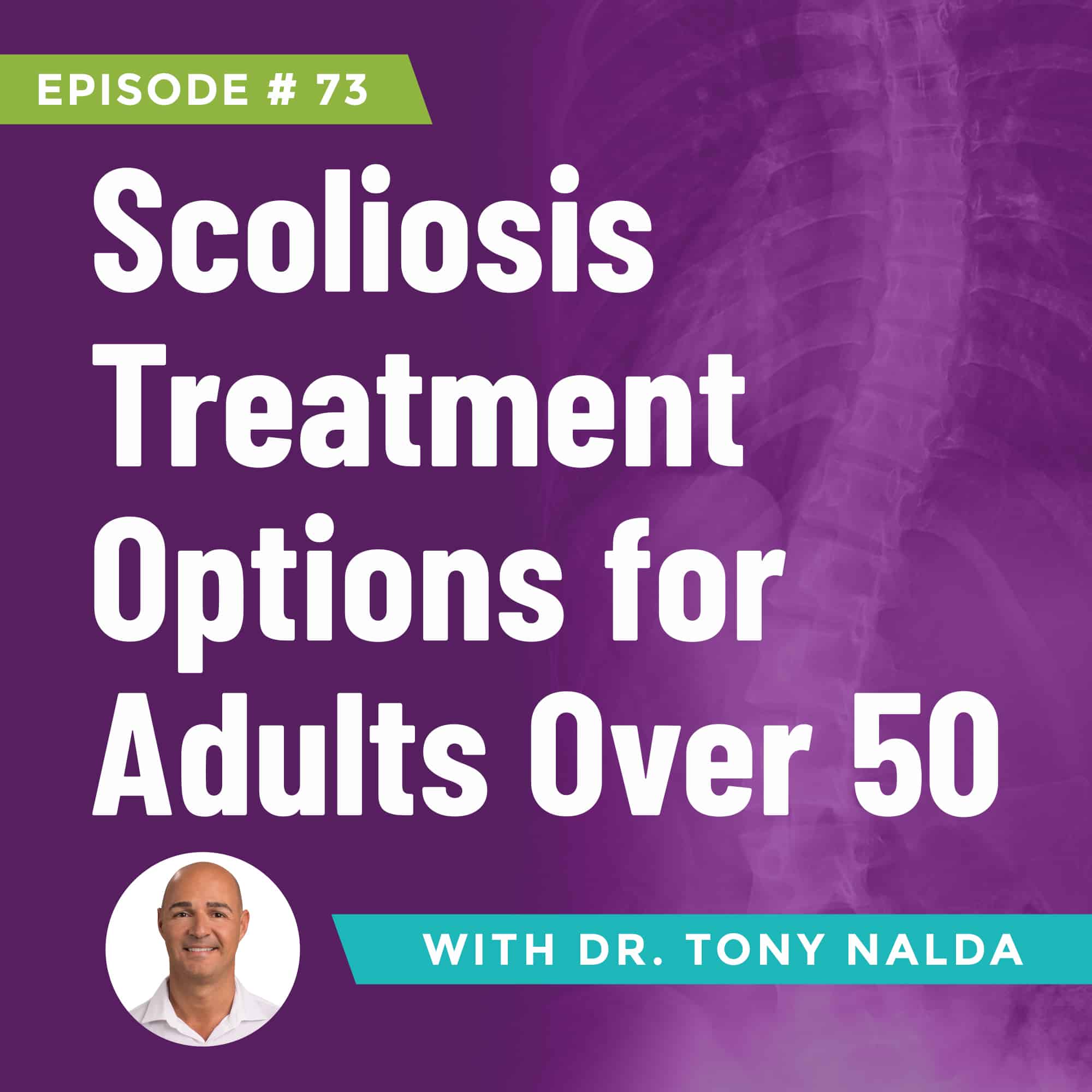Episode 73: Scoliosis Treatment Options for Adults Over 50
Scoliosis is often diagnosed among children and adolescents. However, contrary to common perception, scoliosis isn't confined to. In fact, there are studies that indicate that up to 50% of patients in the 60s and 70s have some form of scoliosis, with Idiopathic and degenerative scoliosis as the main types affecting adults over 50.
2 Types of Adult scoliosis
- Idiopathic scoliosis: Most common type and often an extension of adolescent idiopathic scoliosis.
- Degenerative Scoliosis: Resulting from age-related spine degeneration, typically seen in patients over 40, especially women around menopause.
Adult Scoliosis Symptoms
- Adolescent vs Adult Pain – Scoliosis is often pain-free during adolescence, as growth counteracts the compressive forces of gravity on the spine while gravity-induced compression becomes a key factor in the adult form of scoliosis, leading to pain as the spine curves slowly over time.
- Pain onset - In adults, scoliosis progression is slow and chronic due to gravity's consistent pressure. This compression puts pressure on muscles, nerves, and surrounding tissues, resulting in discomfort and pain.
- Age-related pain - Pain associated with scoliosis typically begins in patients over the age of 40. Women going through menopause, around 50-55 years of age, may experience an increase in pain due to hormonal changes.
- Pain is not always correlated to curve size - The level of pain isn't necessarily determined by the size of the spinal curve. Pain in adult scoliosis is often related to how much the curve progresses in the adult stage, rather than the curve's initial size.
Many adult patients seek treatment primarily to manage their pain and discomfort but treating symptoms alone may not fully address the underlying cause of scoliosis and its progression.
With any form of scoliosis, early intervention and proper treatment is important to manage the pain, reduce curve progression, and enhance spinal function. Seeking specialized care to scoliosis can help mitigate symptoms and improve overall quality of life. Remember, understanding the unique symptoms of adult scoliosis is crucial to finding effective solutions and ensuring a healthier, pain-free future.
For more on this, check out Dr. Tony Nalda’s podcast.
Artlist.io 847544
Podcast: Play in new window | Download
Subscribe: RSS
Dr. Tony Nalda
DOCTOR OF CHIROPRACTIC
After receiving an undergraduate degree in psychology and his Doctorate of Chiropractic from Life University, Dr. Nalda settled in Celebration, Florida and proceeded to build one of Central Florida’s most successful chiropractic clinics.
His experience with patients suffering from scoliosis, and the confusion and frustration they faced, led him to seek a specialty in scoliosis care. In 2006 he completed his Intensive Care Certification from CLEAR Institute, a leading scoliosis educational and certification center.
About Dr. Tony Nalda
 Ready to explore scoliosis treatment? Contact Us Now
Ready to explore scoliosis treatment? Contact Us Now








